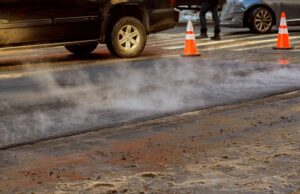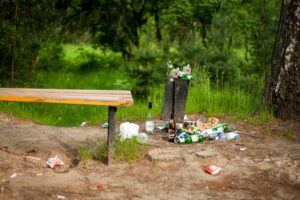Breathing the Unthinkable
In some cities, the air isn’t just heavy—it’s toxic. The phrase “you can’t breathe sewers” might sound like hyperbole, but for millions of people living near open sewage canals, heavily polluted waterways, or aging industrial zones, it feels uncomfortably close to reality. When air and water pollution converge, the result is an invisible but dangerous cocktail that threatens public health, well-being, and even human dignity.
Urban Hotspots of Pollution
Sewer Systems in Crisis
- In many cities across the globe, overflowing or exposed sewage systems release methane, ammonia, hydrogen sulfide, and other noxious gases.
- These gases can rise above street level and mix with city smog, creating air that is physically difficult to breathe—especially for children, the elderly, and people with asthma.
Air That Burns the Lungs
- Poor neighborhoods often sit closer to industrial plants, incinerators, highways, and wastewater treatment facilities.
- These communities report burning sensations in the throat and eyes, nausea, and difficulty breathing—all symptoms linked to toxic exposure.
- Particulate matter, volatile organic compounds (VOCs), and airborne pathogens mix with humid urban air to form a hazardous fog.
Water Pollution That Infects the Air
Wastewater Evaporation
- In hot climates, open wastewater channels can evaporate, sending aerosolized fecal particles and bacteria into the surrounding air.
- This can lead to outbreaks of respiratory infections, even in areas far from the initial water source.
Combined Sewer Overflows (CSOs)
- Many older cities have outdated sewer systems that combine sewage with stormwater.
- During heavy rain, these systems overflow, dumping untreated sewage into rivers, lakes, and even streets.
- The result? A mix of pathogens, chemicals, and human waste released into environments where people live, walk, and breathe.
Environmental Injustice in Plain Sight
Communities affected by this type of pollution are often low-income or marginalized. In many cases:
- They didn’t cause the pollution, but live with the consequences.
- They have less political power to demand infrastructure upgrades or pollution controls.
- Children growing up in these environments face lifelong risks: from lower cognitive development to chronic respiratory and heart issues.
Common Questions
Can you really get sick from breathing sewer air?
Yes. Hydrogen sulfide, methane, and other sewer gases can cause headaches, dizziness, nausea, or worse. Long-term exposure increases health risks.
Is wastewater pollution airborne?
Indirectly, yes. Wastewater can aerosolize under the right conditions, spreading bacteria, viruses, and chemicals into the surrounding air.
Which cities are affected the most?
Cities with aging sewer infrastructure, high population density, or climate stress (e.g., flooding, heat) tend to be at higher risk.
What can be done?
Upgrading infrastructure, separating sewage from stormwater, increasing green spaces, and pushing for environmental justice reforms.
Final Thoughts
You shouldn’t have to hold your breath to live in your neighborhood. But for far too many people, the combination of sewer gas, air pollution, and decaying infrastructure turns everyday life into a health hazard. Urban pollution isn’t just about smog—it’s about systems that need fixing, people who deserve better, and the urgent need to reimagine clean, breathable cities for all.
Making this change isn’t just an environmental priority—it’s a human right.









Reader Interactions